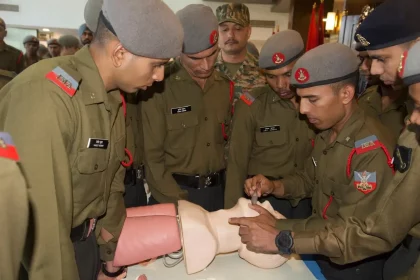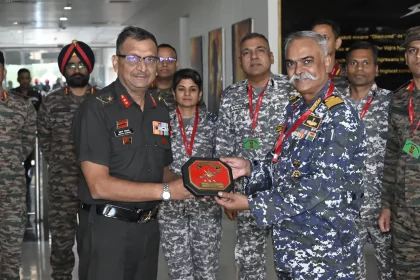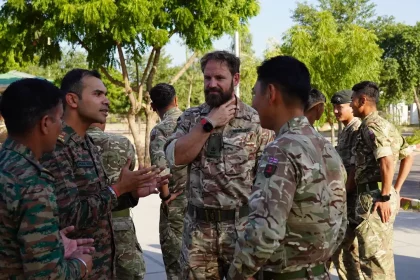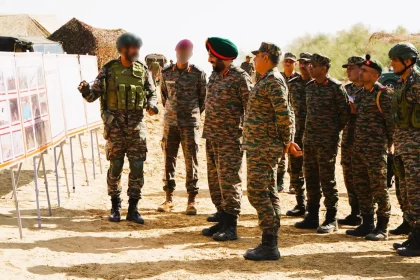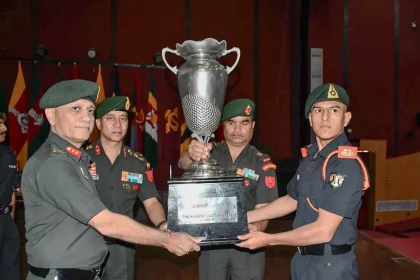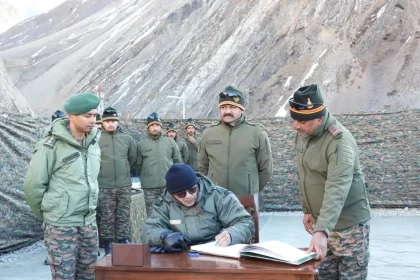IMA Cadet Yodha Rakshak Exercise Trains 453 Future Officers in Critical Combat Casualty Care
Elite AMCC Centre instructor team enhances frontline trauma response through intensive hands-on training at IMA Dehradun.
Higher Defence Management Course 21 visited the Headquarters of Sapta Shakti Command
Future military leaders briefed on multi-domain operations, logistics dynamics and capability development initiatives.
UK Army Contingent Arrives in India for Exercise Ajeya Warrior 2025
2 Royal Gurkha Rifles receives a warm traditional welcome from the Indian Army’s SIKH Regiment ahead of joint drills.
Lt Gen Manjinder Singh Reviews Operational Preparedness of Bhairav Strike Force and Ranbankura Division
Sapta Shakti Army Commander commends high-tempo training, precision manoeuvres and future-ready capabilities.
Lt Arjun Singh Bhist Named Best Student as Young Officers’ Course Concludes at The Infantry School, Mhow
Officers from six Friendly Foreign Countries join Indian counterparts in completing intensive training on weapons, tactics and leadership.
Defence Secretary Rajesh Kr Singh and Lt Gen Raghu Srinivasan Review High-Altitude Infrastructure Push in Kumaon Sector
Defence Secretary Shri Rajesh Kr Singh, IAS, along with Lt Gen Raghu Srinivasan, Director General Border Roads, visited the Kumaon…

